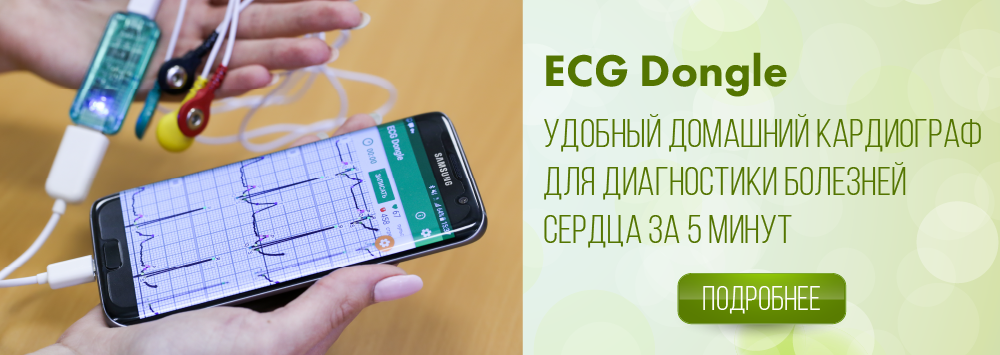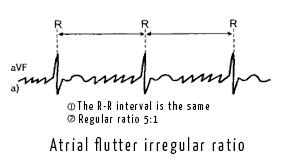Atrial flutter
Atrial flutter is a tachyarrhythmia with a regular atrial rhythm (up to 200-400 beats per minute). Atrial flutter is manifested by paroxysms of the heartbeat lasting from several seconds to several days, arterial hypotension, dizziness, loss of consciousness. Drug therapy, radiofrequency ablation and atrial cardiostimulator are used to treat atrial flutter.
Atrial fibrillation and atrial flutter are closely related and can alternate, mutually replacing each other. Atrial flutter often develops in men older than 60 years. In most cases, atrial flutter occurs against the background of organic heart disease. The causes of this type of arrhythmia include rheumatic heart defects, Ischaemic heart disease (atherosclerotic cardiosclerosis, acute myocardial infarction), cardiomyopathy, myocardial dystrophy, myocarditis, pericarditis, hypertension, sick sinus syndrome (SSS), WPW syndrome. Atrial flutter can complicate the course of the early postoperative period after cardiosurgical interventions for congenital heart disease, coronary artery bypass grafting.
Atrial flutter occurs in patients with chronic obstructive pulmonary disease (COPD), pulmonary emphysema and pulmonary embolism. With a pulmonary heart, a terminal stage of heart failure is sometimes accompanied by atrial flutter. Risk factors for atrial flutter, not associated with cardiac disease, may include diabetes mellitus, thyrotoxicosis, sleep apnea syndrome, alcohol, drug and other intoxication, hypokalemia.
If atrial flutter develops in a practically healthy person for no apparent reason, they talk about idiopathic atrial flutter. The role of genetic predisposition to the appearance of atrial fibrillation and flutter is not ruled out. The clinic for the first time developed or paroxysmal atrial flutter is characterized by sudden palpitations accompanied by general weakness, decreased physical endurance, discomfort and pressure in the chest, stenocardia, shortness of breath, arterial hypotension, dizziness. The frequency of paroxysms of atrial flutter varies from one a year to several a day. Seizures can occur under the influence of physical activity, hot weather, emotional stress, drinking plenty of fluids, alcohol consumption and intestinal disorders. With a high pulse rate, presyncopal or syncopal states often occur.
Even asymptomatic atrial flutter is accompanied by a high risk of complications: ventricular flutter, ventricular fibrillation, systemic thromboembolism (stroke, kidney infarction, pulmonary embolism, acute occlusion of mesenteric vessels, occlusion of the vessels of the extremities), heart failure, cardiac arrest. Atrial flutter is characterized by resistance to antiarrhythmic medication, resistance of paroxysms, a tendency to recur. Relapses of flutter can be transferred to a atrial fibrillation. The prolonged course of atrial flutter predisposes to the development of thromboembolic complications and heart failure.
Patients with atrial flutter need to be monitored by an arrhythmologist cardiologist and to be consulted by a cardiosurgeon to decide about the expediency of surgical destruction of the arrhythmogenic focus.
Prevention of atrial flutter requires the treatment of primary diseases, reducing stress and anxiety, stopping the use of caffeine, nicotine, alcohol and certain medicines.
It is possible to determine this dangerous heart rhythm disorder at home using ECG Dongle [1], ECG Dongle Full [2] and «Serdechko» [3].


